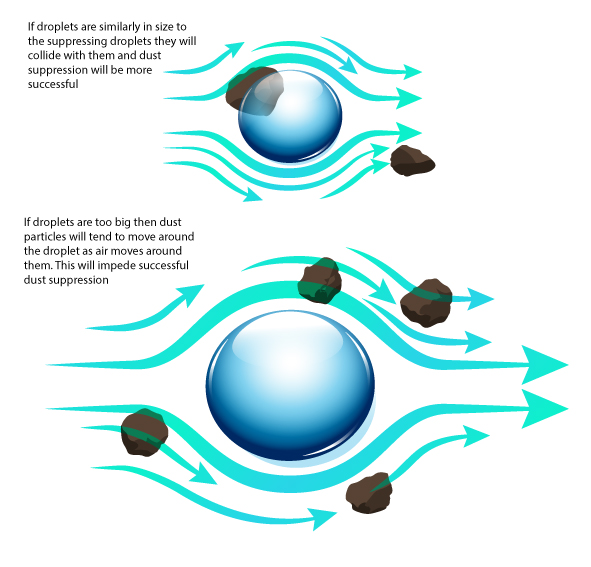Dust particle and droplet size matching
Symptomatic dust control requires a relatively fine spray with small droplet sizes. Smaller droplets give a greater overall surface area for any given volume of fluid. They will also remain airborne for longer. This means that with finely atomised sprays there is a much greater chance of a water droplet interacting with a dust particle and removing it.
Also the fine particles that make up a dust will tend to flow past suspended water droplets if the droplet is considerably larger. This is because air will flow around the spherical water droplet carrying the smaller dust particle away. Of course, the same is true if the water droplets are much smaller than the dust particles. So if the spray is too fine then dust suppression will not be optimum. If, however, the water droplet is roughly the same size as the dust particle the air flows are far less likely to impede agglomeration.

Most dusts are formed of the 50-200 micron range of particles and so sprays with a large proportion of droplets in this range are desirable. As such, nozzles that produce relatively fine sprays are required. Suitable choices could be the P and PJ impingement misting nozzle or, for exceptionally fine sprays, our XA air atomising nozzles. The other engineering considerations discussed in this section may narrow the choice.
Details on the features of different designs of nozzle and how they relate to dust suppression can be accessed by clicking on the relevant design in the grey "Nozzle Designs" menu to the right hand side of this page.